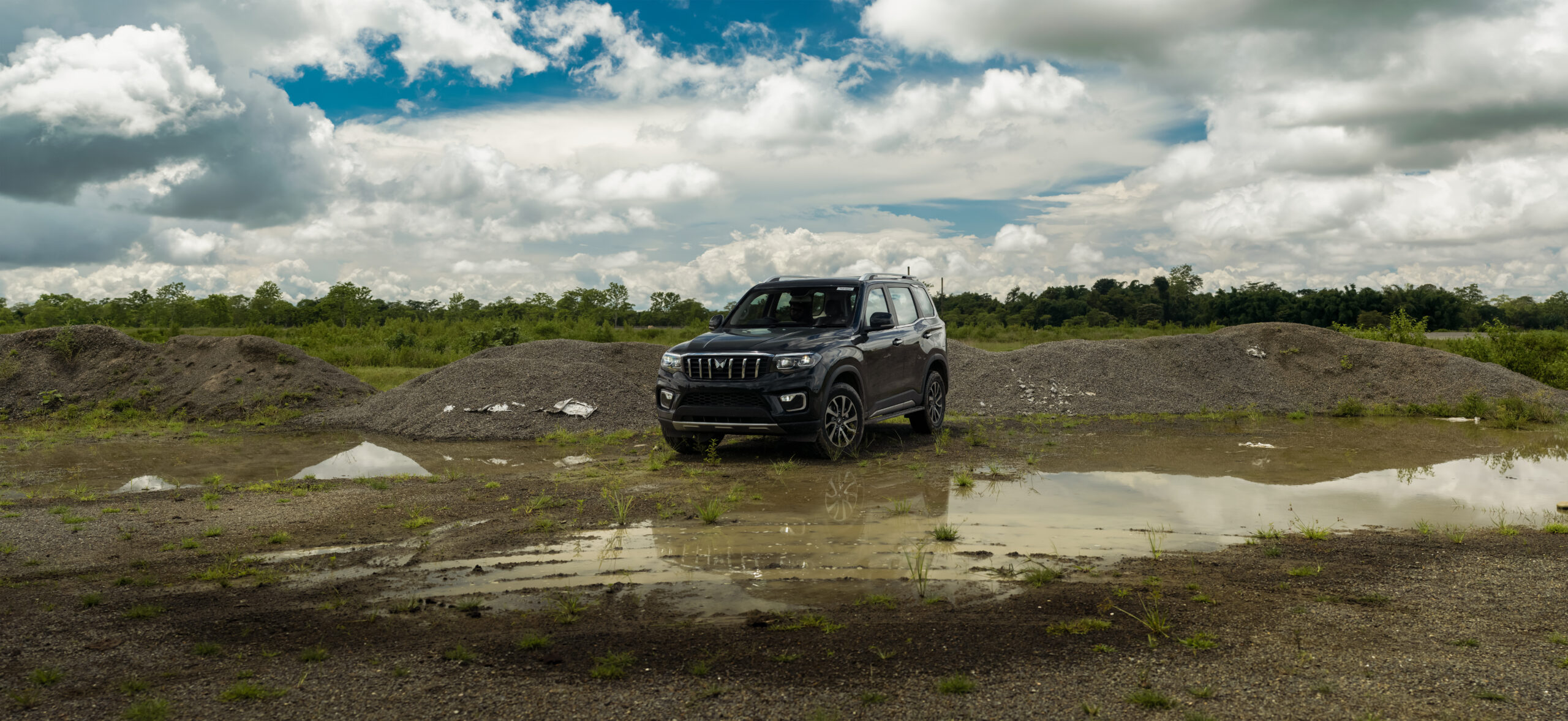My first memory of the Scorpio, at least the one that I can somewhat clearly remember, is from 2004-2005. My father had taken me to the Mahindra dealer in Shillong, whose owner was a friend of his. Before leaving, he gave me a black Centy toys Scorpio. Now, as a 5 year old, you can imagine what sort of an impression that would have in my head. I still have that car somewhere stashed away, but I never lost it as a kid or gave it away as I got older. That memory is pretty much where my love and respect for the Scorpio started. Over the years I loosely kept tabs on the car’s progress, how Mahindra kept improving the platform, but my interest was waning away because I knew that at the end of the day, the Scorpio was getting long in the tooth. After the 2014 update which resulted in the second generation car, there was nothing worthy of mention on the car; it continued to sell well, being a rugged, powerful value-for-money SUV, but the enthusiast in me, who, by this time had finished schooling, lost interest in the car.
Then, one fine day I was on a rented motorcycle, riding through the hot but pretty Tamil Nadu countryside, trying to clear my head after a hectic day’s classes, a few cars draped in camouflage decals overtook me and I could just make out the last of the bunch, carrying a spare wheel on its tailgate. That was what would become the Thar in 2020. I tried chasing down the convoy but they were too fast; but it got me excited about a Mahindra product once again, after a very long time. Over the next year or so, I spotted, chased down and clicked pictures of all the three cars that would later change people’s outlook about Mahindra. Of that bunch, the Thar became the most impressive improvement over its previous generation and the XUV7OO followed its predecessor’s footsteps of being extremely feature-rich but also mechanically sorted this time around. One car in particular, the Scorpio, complete with makeshift round headlights sticking out of the bodywork, interested me more than the others, maybe because of the impression it had on my wee little brain. This was a car I wanted to be flawless, something its predecessors never really could be. This was a car that had to carry the legacy of the Scorpio brand while fending off fierce competition from raised hatchbacks dressed in nude plastic. So, now that it’s finally here, how does it live up to expectations?

At first glance, the Scorpio is a mixed bag in terms of looks. It seems Mahindra never knows when to stop designing; sure, some of their designs are distinct but they age poorly. This new Scorpio N though, in my eyes, won’t be a victim of aging poorly. But it will make you think, why couldn’t they just make a perfect design?

Let’s start with the front, quite possibly the best angle of the car… and then your eyes fall on the C-shaped DRLs designed to mimic a scorpion’s sting. Yes, they’re leaning heavily on this scorpion business big time. I have no issue with the shape of the DRLs, but their placement is what bugs me. They’d be a much better fit within the headlamps and that would have cleaned up the lower section of the bumper. It’s a shame, because the rest of the front end, in my eyes, is top class. The bonnet is big and flat, although it has lost the very cool hood scoop. The curves on the headlights look mature, as do the contours of the bumper.

The part that catches your eyes is the grille; and for once, this is the perfect grille for the Scorpio. It seems to pay homage to the grilles of the first cars, with horizontal fins running the length, complemented perfectly by the six-slat Mahindra motif. Another interesting bit is the rubber strip that cover up panel gaps along the top of the grille and headlights. The subtle chrome strip on the top runs seamlessly into the headlights and that’s when you think, couldn’t Mahindra have made that part the DRL? The headlights are beautifully detailed and house an amber turn signal that swipes outward; a very slick look there. Further down you notice the foglamps which are LED projectors; on some other car that has the intentions of being a safe, family SUV for long road trips across poorly lit roads and unpredictable weather, you’d think good old halogen foglamps should have been the norm, and you’d be right. Halogens can cut through fog, rain, and mist much better than LEDs, but as I was driving the Scorpio at night, I realised that without those foglamps, the headlight performance is just about adequate at best.
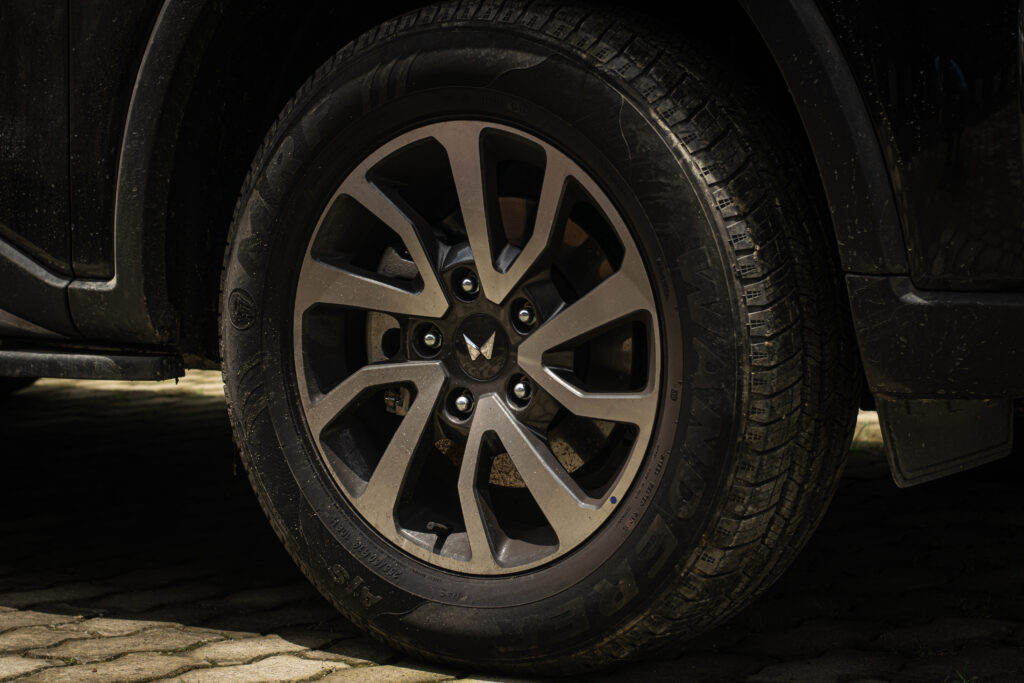
Down the sides, you get smart-looking alloys that tie in with the rest of the design very well and, for the first time on a Scorpio, rear disc brakes, that too, ventilated ones! The side profile itself has a very proportionate, classic-SUV-with-a-big-engine-look till the rear wheel, after which it looks like a people mover. The dash-to-axle ratio is great, with the upright windshield helping to get that butch-look. Door mirrors are huge, probably to compensate for the lack of a 360-degree camera system. Down the window line is a strip of chrome that runs the length of the glasshouse and kicks back up around, finishing in another ‘Scorpion sting’ motif, which doesn’t look half bad. But, after seeing some of the design sketches by Mr. Pratap Bose and his team, that ‘sting’ had extended upto the point where the roof starts to step up, and that looked much more proportionate than what ended up on the final car. Some things that also looked better in the sketches are the ‘character-lines’ over the wheels arches, which were much more prominent on paper, giving the car a more imposing look. Enough with what could have been, I’ll get back to the real car now. Down the sides, you’ll realise that the thick plastic claddings are now gone and this Scorpio N relies on its sheer expanse of metal to look butch.
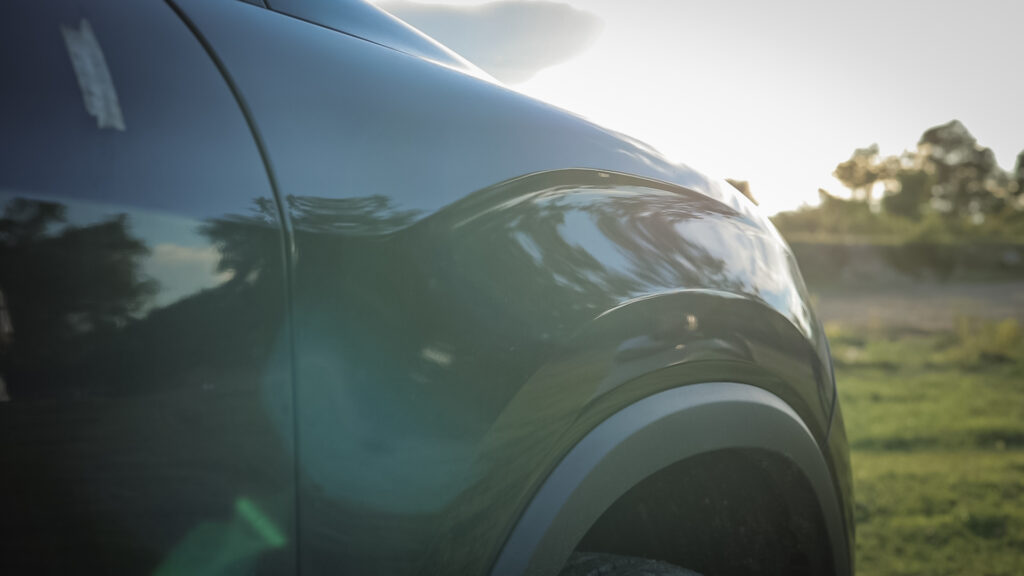
Now, there are designs that divide opinion and designs that unify opinion, sometimes for good, sometimes for worse. Towards the rear of the Scorpio N is where things start to tip towards the latter. I don’t remember the last time I saw so many people be on the same page about a Mahindra design; but this tailgate just doesn’t complement the rest of the car. A tall, flat piece of metal with not many lines other than on the license plate area; and those lines look extremely out of place. The taillights have garnered their own interest on the fun land of the Internet, but I don’t think they are a bad design. They look eerily similar to the current XC90’s, coincidently both the Volvo and the Scorpio were initially launched in 2002, although it was not until 2006 that the Scorpio received the ‘towering taillights’. What I do not like about these lights is that for all its fancy looks and swiping indicators, it doesn’t house a reverse light. I don’t understand why manufacturers do this, but in bumper-to-bumper traffic, it’s impossible to see a reverse light mounted this low. Opening and closing the huge tailgate is made easy by a hydraulic strut, and you don’t have to slam it to shut it anymore. Speaking of struts, the bonnet does not get any; you’ll get a good workout opening and shutting that.
Step inside and you’re greeted by a sea of brown leatherette; this color scheme is starting to become popular in many cars but, in my eyes, the Scorpio N is the one that has executed it best. The mix of black plastics and brown leatherette is smartly offset by brushed silver trim. And yet, it’s not all rosy here; Mahindra has decided to use piano black for the switch panel on the doors. Good luck keeping that scratch-free. Parts of the interior retain some of the older Scorpio’s feel, with a shallow dashboard, which is great but what isn’t is the sense of space below the shoulder line; that trait doesn’t seem to stop troubling all Scorpios, huh? Oh, and you still don’t get an auto-dimming rearview mirror, which is a glaring oversight considering the top-end car costs more than 24 lakh. Apart from those gripes, I really like the interior. The switches are all well laid out, the screen is big enough, the instrument cluster is amazing to use, and that MID in between the dials has high resolution and refresh rate; these little things contribute a fair bit to offering a very relaxing driving experience.
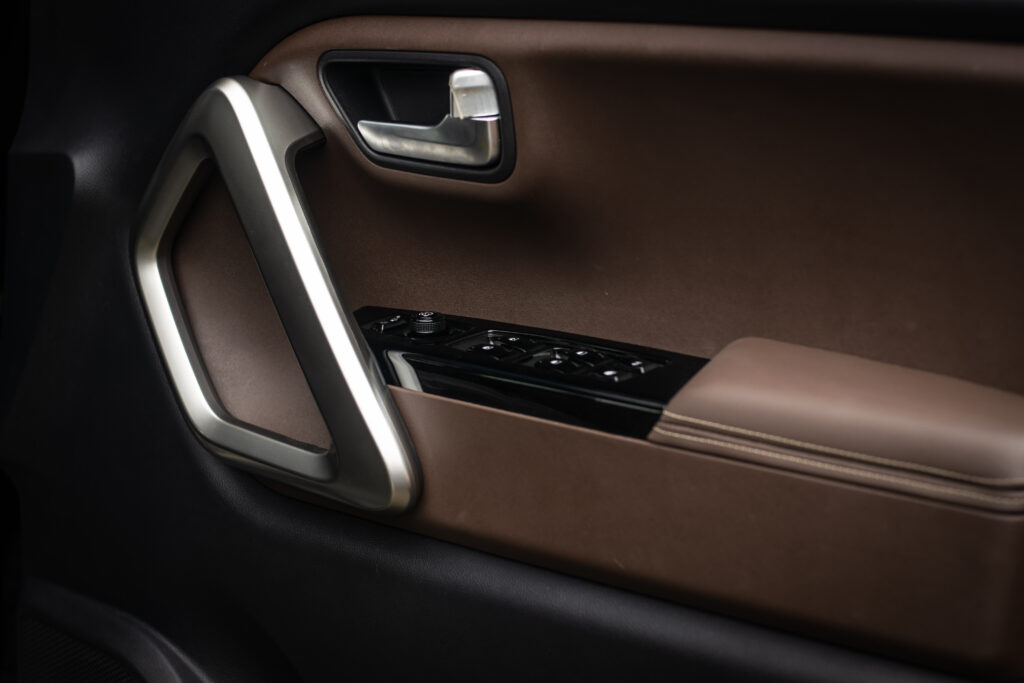
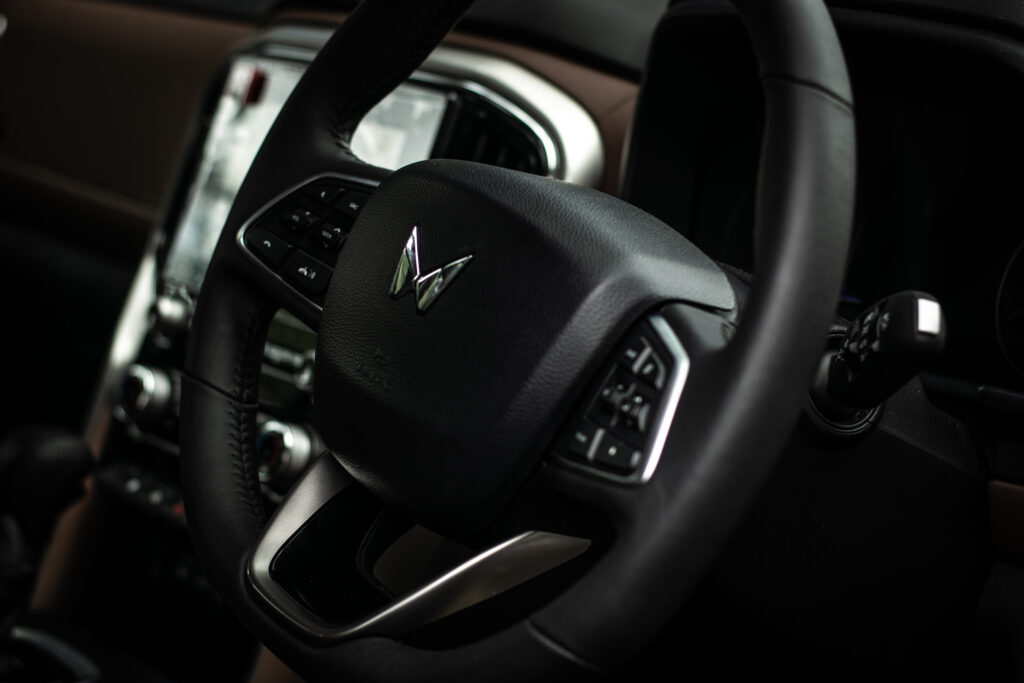
I’m really happy that Mahindra decided to go with a smaller, single-pane sunroof. The only real use for a sunroof of that size is to let light into a dark cabin, to make it feel airier, not to stick your head out and blast music out of a moving car. A panoramic roof comes with a massive weight penalty too; a heavy slab of glass, rails, and motors right at the top of the car is not ideal for the centre of gravity. The Scorpio, already being a tall car does not need the added complexity.
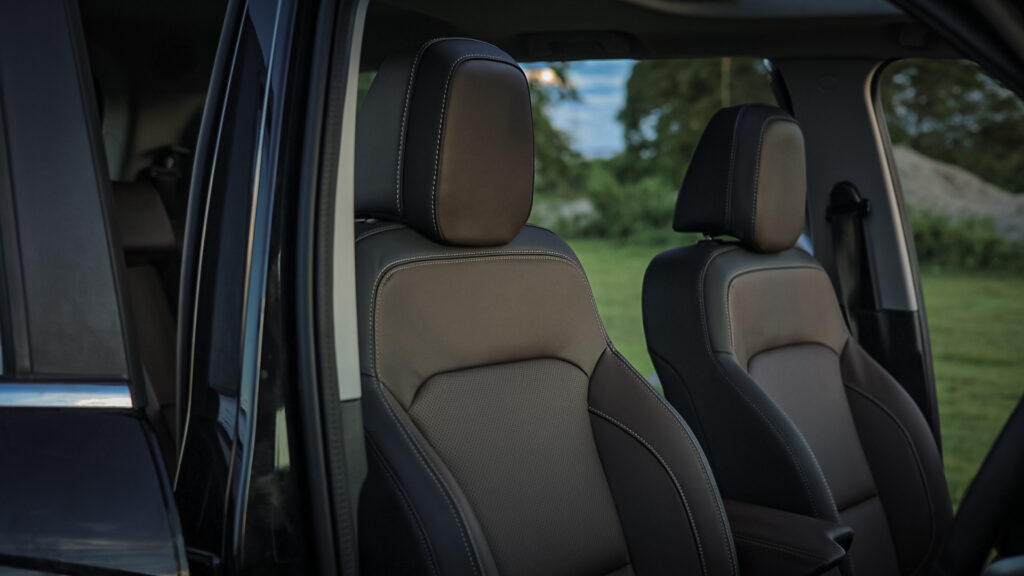
The seats are comfortable and supportive and the driver gets electronic adjustments too. All the touch points are soft-touch leatherette and in other areas, like the top of the dash is hard plastic, which is perfectly fine; how often you are going to touch that? There is an armrest-cum-storage bin that is so shallow that it can barely hold your wallet and some change, thanks to the separate blower for the rear vents taking up most of the space. The rear seat is where you’d not feel short-changed for space. There is plenty of head, shoulder, and knee room but the centre armrest is only wide enough for one arm; that’s odd, given how wide the seats are. To get to the third row, the middle row seats have a one-touch tumble feature, and a step to help you get in, very thoughtful of Mahindra. What is not very well thought out is the third row itself. Now, most body-on-frame SUVs have pretty useless last-row seats but here it is a bit of a disappointment because Mahindra knows a thing or two about packaging and space management; case in point, the Xylo. The Xylo had roof-mounted AC vents, cup holders, a centre armrest, and of course, properly usable seats. And, when you didn’t want the 3rd row, it had a completely flat floor, and this car has neither. With all the seats in place, it can barely hold a small backpack or two and with the last row folded, the seat supports get in the way. Not very good thinking there.


The speakers on this car deserve special mention. It has the same 12-speaker Sony sound system as the XUV7OO; the mid-tones are crisp without oversaturating the highs and the bass, in its stock setting is perfect for audiophiles. Some things that could be better are the leather on the steering wheel; it is a touch too hard, making it feel like a plastic wheel and given that the leather on the gear shifter feels great, I don’t see why the steering didn’t get the same treatment. Another complaint is the camera system; the feed looks like it is from 1996 and it has horrible lag too, but I guess that is an easy software fix so it’s not a deal breaker.


What is definitely not a deal breaker is the engines; two very potent ones which suit the nature of the car to a T. For the first time since the first-gen car launched with an optional petrol engine, the Scorpio N now has one too. The mStallion 2-litre turbo sends all of its 203hp to the rear wheels alone and if you turn off the traction control, it will eagerly kick its tail out. There is none of the kickback you’d expect from a highly strung turbo-petrol, what you get is an extremely linear and effortless power delivery, which suits the nature of this car. The engine just keeps on building power and you’ll only slow down when you look down and see the fuel consumption. Now, this is not a characterful engine in any sense of the word, but it fits the nature and purpose of the car extremely well. Paired to this engine is a 6-speed torque converter and immediately it is clear that it is a far cry from previous automatic Scorpios. The upshifts are smooth and downshifts are quick, exactly what you’d need in a car like this. Although there are no paddle shifters, you can shift manually through the lever and you will be surprised at how responsive it is for a torque converter.


I’m yet to drive the mHawk diesel, but going by the engine-gearbox setup on the XUV7OO, it looks to be a win-win for Mahindra. Thing is, will people really go for the petrol, considering 9 kpl on a good day is all you’ll get and the diesel will go further on a single tank? It’s not like there’s a lot of difference in power; 170hp plays 203. The diesel’s higher torque will be made with less effort too, so that might be the better engine. But if you absolutely need a petrol car, this won’t disappoint either. The NVH levels on the petrol car is something to note; it is so quiet inside the cabin, you’ll feel yourself nit-picking that the AC is too loud or the blower for the rear vents makes way too much noise or that the big rear view mirrors create a lot of wind noise at high speeds. Just play some tunes on the banging stereo and you won’t notice those noises. And, judging by how refined Mahindra’s diesels are, the NVH won’t change much. As a whole package, both engines and gearboxes complement each other perfectly and is a flawless fit for the new Scorpio; effortless, all-day cruising on good roads, broken roads, no roads. I’ll soon be driving the diesel automatic with 4×4, so watch out for my thoughts on that.

Being a comfortable cruiser is what the older Scorpios never really managed to do, but I am extremely happy to report that this does not ride and drive like any Mahindra built on a ladder frame chassis, bar the Alturas (but that’s not a true Mahindra). The new chassis and new body are lighter, stiffer and more importantly, both have finely tuned natural frequencies to avoid vibration by resonance and it seems to have worked. Driving the new Scorpio back to back with a 2017 second-generation car over the same section of road with badly made rumble strips (exactly the kind of situation which would trigger a resonance vibration), you would not believe how utterly isolated from the road the new car feels. Only the Endeavour, the benchmark for ride and handling among the body-on-frame SUVs could have fared better.
The Scorpio uses a variation of the Koni Frequency Selective Dampers found in the XUV7OO, called Frequency Dependent Dampers here, although I’m not sure who makes them. At speeds above 50kph, these dampers do seem to add a layer of sophistication to the ride you’d previously only associate with the big Ford. However, at low speeds over potholes and undulations, the Scorpio still has quite a bit of side-to-side movement and at speeds above 100kph, there are faint hints of movement on seemingly flat concrete roads, something the Endeavour had pretty much figured out. But, the very fact that I am comparing a car from a segment above to the Scorpio should tell you a thing or two about the ride. I still retain that the XUV7OO rides better on roads without potholes, however, the sheer ability of the Scorpio N to bulldoze your way through bad roads and not feel like you’re inside a washing machine but rather a plush business class seat during a Philippines Airlines landing (they have the record for smoothest landings) is commendable. If you are an old Scorpio owner, you will be floored at how good the ride is.

Now, let me make it clear, this is not a car you’d want to push around corners. This is a car best driven at 7-tenths. It will hold its line and make the corner, but you would not want to do it more than once. Trying to make something this tall, big and heavy handle well is not an easy job. But Mahindra has tried to counter that with some engineering choices like for example, widening the wheel track, using trick dampers and keeping the roll arm height (which is the axis along which the body rolls with respect to the chassis) as low as possible. While there’s no threat of toppling the car, there is a lot of body roll. Brakes are very powerful and will stop the hulking mass without drama, but it does not feel progressive, at least on the test car. The steering, which is light at low speeds is a breeze to use but it should have weighed up more at high speeds; but finally, this is the first Scorpio where the steering feels it is connected to the front wheels by solid metal rather than jelly. It is not direct but provides decent feedback, which is perfectly fine in a car like this. The way this car handles, keeping in mind that the ride is great as well, makes this the ideal long-distance road tripper.
Overall, the new ScorpioN holds its own extremely well among the competition, which includes anything in the 12-30 lakh bracket, and that is a long list of cars. In fact, Mahindra alone offers three of its new stalwarts (this, the XUV7OO and Thar) at similar prices, and overlapping one another for many variants.


This brings me to the question… why would you want the XUV7OO over the ScorpioN or the other way around? And where does the Thar fit in in all this? Because, I’ve seen people who had booked a Thar and while awaiting delivery, buy the XUV7OO instead. Both of those are very different vehicles with utterly different use-cases and yet, it seems that both share an overlapping customer profile. Is that going to happen with the Scorpio and the XUV as well? Given the similarities on the surface; both being 3-row (somewhat), comfortable family SUVs with apparently similar use-cases, buyers are likely to be confused about which one to go for. But in reality, these two are very different cars; The XUV, being a brilliantly designed monocoque underneath, is much lighter and stiffer whereas the Scorpio’s rugged body on frame construction can take a lot more abuse. The XUV is easier to drive, handles better, and rides more maturely over smooth and lightly broken roads but the Scorpio rides better where there are potholes instead of roads. On the feature front as well, the XUV is the better equipped one, with larger screens, a panoramic sunroof, and a much better camera system. Where it misses out on features, the ScorpioN makes it up by being the simpler sibling with less things to go wrong. And, with a proper low ratio gearbox and mechanical locking rear differential, your adventure will continue when the road ends. Both these cars take a different approach to arrive at the same conclusion; to be a safe family SUV with immense road tripping potential. So, if you are based somewhere down South with smooth highways, go for the XUV. And if you are in a place like the North East or way up North, the Scorpio is the better bet. The Thar, on the other hand, is more hard-core, bare-bones, with excellent off-road prowess but that compromises its on-road capabilities. And the ScorpioN acts as the perfect bridge between the hard-core Thar and the sophisticated XUV7OO.

Like the Scorpios of yore, the new one is not flawless. And I was wrong to expect that from a car; small flaws are what makes a car ‘characterful’. But for the first time since 2002, it now has almost all of its mechanicals sorted and some of the glaring shortcomings are nothing that cannot be fixed with small updates.
And carry the legacy of the brand, the Scorpio N shall. Priced very competitively for the lower variants, this car is much better sorted, much better suited for many parts of the country where terrain is harsh, than an equivalent glorified hatchback on stilts, even though the latter will have more feel-good features. Look through that rose colored facade and you’ll know that the Scorpio is the better automobile.
Finally, after seeing the many engineering decisions they made and seeing them work in harmony on the final product, I feel extremely glad to see where Mahindra has arrived as a carmaker. It has been a long time coming, but the wait was worth it.
Good job, Mahindra.
Technical Specs
Mahindra Scorpio N
Engine: 1997cc / Inline 4-Cylinder / Turbocharged Direct Injection
Transmission: 6-Speed Torque Converter Automatic
Fuel: Petrol
Power: 203 HP @ 5000 rpm
Torque: 380 Nm @ 1750-3000 rpm
| Pros | Cons |
|---|---|
| – Well engineered product – NVH levels rival premium segment – Engine and gearbox combo is top notch | – Misses out on some basic features – Space management |
TDH Verdict: A perfect candidate to carry the Scorpio's legacy to new heights; has all the basics sorted through sound engineering decisions with some room for improvement in other areas.

